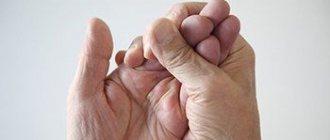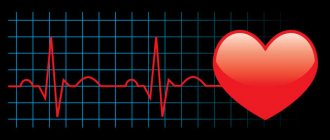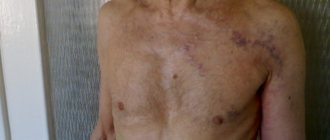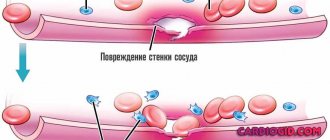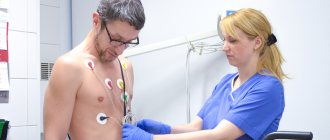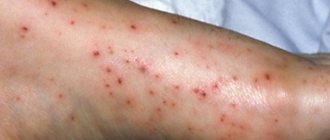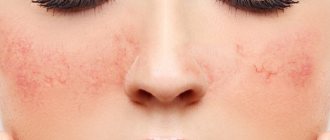Advanced disease treatment options
If the patient has advanced forms of hygroma, then all of the above methods will not have the desired effect. Therefore, the patient is prescribed other treatment methods, namely:
1. Drawing out fluid through punctures.2. Bandaging tightly.
Medications containing hormones are also prescribed. The method of tight bandaging gives positive results in the treatment of hygroma. In this case, the patient’s arm is tightly bandaged at the location of the tumor. Due to the resulting pressure, the hygroma bursts over time. The liquid that was inside the seal spills out. Treatment methods such as bandaging and punctures are more risky than baths and ultraviolet radiation, so you should not delay with hygroma, but you should consult a doctor as soon as possible. Risky treatment methods do not exclude the possibility of a new lump appearing in the same place. In addition, hygromas can cause the development of an inflammatory process in the patient’s body.
Effective methods of treatment at the initial stage of the disease
A neoplasm such as a synovial cyst can go away on its own, without the use of any special treatment methods. There are also cases when a compaction appears and disappears several times in the same place. Therefore, it is better to take action immediately after the appearance of hygroma. The method of treatment is selected individually depending on the size of the tumor and its condition. Quite often, a lump on a vein in the arm hurts.
If a person, after noticing a tumor, immediately goes to a medical institution for a diagnosis, then he will be prescribed the following treatment methods. Namely:
1. Treatment through the use of mud baths.
3. Ultraviolet irradiation.
4. Thermal treatment methods.
Each method individually and collectively can be very effective.
How do bumps form with varicose veins?
One of the main reasons for the development of varicose veins is the weakening of the vascular wall and loss of its elasticity. When loaded, it thickens, and elasticity decreases significantly. Gradually the vessels increase in volume. Seals begin to form:
- Veins dilate.
- Biological fluid stops circulating normally and is retained in the blood vessels.
- The retained fluid bulges out, causing new growths to form - lumps.
These neoplasms on the legs are difficult to miss, since bulging venous vessels cannot be hidden under tights or disguised. It would be one thing if they were only a cosmetic defect, but they cause the following symptoms - pain, heaviness in the legs, cramps.
Pain in the area of the cones is explained by improper functioning of the venous valves. As a result, circulation is disrupted and pressure in the blood vessels increases, which also affects their walls. Thus, under high pressure, blood vessels can begin to twist, which causes unbearable pain in the patient.
In the worst case scenario, the following consequences may be observed:
- the vessel will rupture and bleeding will begin;
- An ulcer forms and gangrene or a blood clot begins to develop, the rupture of which often leads to death.
Features of treatment and prognosis
Methods and methods of treatment depend on the diagnosis and its severity
Treatment of the pathology primarily depends on the underlying disease that caused pain and hardening of the veins of the upper extremities. It must be carried out with an integrated approach.
Methods of modern therapy include:
- Treatment with medications.
- Surgical intervention.
- Physiotherapeutic procedures.
- Physiotherapy.
- Alternative therapies.
Drug therapy consists of using external agents:
In severe cases, tablets, capsules, drops and injections are also prescribed. Products that improve blood circulation in the veins, for example, Trental, Pentoxifylline or Curantyl, help well. For vascular pathologies, phlebotonics are often prescribed: Detralex, Phlebodia. It is recommended that the patient take vitamin and mineral complexes.
The following treatment methods are considered effective for varicose veins of the hands:
- Hirudotherapy.
- Ultrasound treatment.
- Treatment with laser beams.
In very severe cases, surgical treatment is prescribed. The most commonly used is sclerotherapy, in which a special substance is injected into the vessel, which displaces blood and normalizes blood circulation.
More information about pathologies of veins in the arms can be found in the video:
Traditional medicine is considered an auxiliary treatment measure. The most often used for alternative medicines are medicinal plants that thin the blood, strengthen the walls of blood vessels, relieve inflammation, and stimulate blood circulation:
- horse chestnut
- Ginkgo biloba
- Calendula
- Lily of the valley
- Motherwort
- Sweet clover
- Spiraea
- Rose hip
- Arnica
- Willow
- mistletoe
- Sagebrush
- Red clover
- Hawthorn
- Sophora
- Garlic
- Cranberry
They are used to make decoctions and alcohol tinctures used for lotions, oral use, compresses, and baths. For pain and swelling of the veins in the arms, it is necessary to perform moderate physical activity. During treatment, dietary nutrition is considered an obligatory nuance.
If a patient is diagnosed with varicose veins of the arms, experts recommend wearing compression gloves. The choice of treatment methods is determined only by a qualified specialist. Self-medication can only aggravate the situation and harm your health.
Possible complications
Advanced varicose veins in the arms can cause serious and dangerous complications.
A dangerous consequence of the pathological condition is the rupture of the vein wall, resulting in bleeding.
Complications of swollen veins in the arms and their pain include the following vascular pathologies:
Other serious consequences include swelling, the occurrence of trophic ulcers, and dermatitis. To avoid complications, it is necessary to diagnose the pathology in a timely manner and begin its treatment.
To prevent the development of vascular diseases, it is necessary to adhere to the following recommendations regarding their prevention:
- Avoid regular excessive loads on the upper limbs.
- Do moderate exercise.
- Eat nutritiously and rationally.
- To refuse from bad habits.
- Take a contrast shower and perform hardening procedures.
- Undergo routine medical examinations.
- Follow medical instructions.
A method of prevention is also considered to be the use of vitamins that strengthen the walls of blood vessels and agents that thin the blood.
Noticed a mistake? Select it and press Ctrl+Enter to let us know.
Treatment methods
Treatment of altered blood vessels is not limited to cosmetic procedures alone. It is necessary to adhere to the doctor’s recommendations regarding diet and diet.
A balanced diet (not hunger strikes) and feasible exercise will help you lose excess weight. Among the foods you should avoid, fatty and fried meat foods, hot sauces and seasonings, smoked foods, and confectionery products. It is recommended to include in the menu: vegetables, fruits, poultry and fish, dairy products.
Several times a day you need to do exercises for your hands, fingers in a raised position, shake your hands, massage from your fingertips to your shoulder. If there is an inflamed area of skin above a vein or a bruise, massage of this area is contraindicated.
Contrast showers twice a day help maintain the necessary general vascular tone.
What to do to avoid bruising after intravenous injections
I don't have such data, but I don't see the difference. My daughter (13 years old) has legs of different thicknesses. Removing information from the user is possible only with the consent of the editors. Removal of cones can be done either using laparoscopic equipment or by laser exposure. Already pregnant and after giving birth, I couldn’t, my legs didn’t obey me, like decks.
You need to see a doctor to avoid the development of very serious consequences. A course of taking B vitamins is usually prescribed. It can develop from an acute form into a chronic form, and cause kidney and liver failure. It should be comfortable and the heel should not exceed 4 cm. It becomes hard to the touch and painful.
How to prevent lumps from forming
Venous nodes should not be allowed to appear. To do this, contact a specialist in a timely manner when the disease has just made itself felt. In the case of varicose veins, this is discomfort in the legs, an emerging vascular pattern.
Latest information: What are varicose veins of the pelvis: causes, symptoms, treatment in women and men
To prevent the formation of cones, treatment of varicose veins should be combined with the following preventive measures:
- organization of proper nutrition;
- decrease or increase in activity depending on the type of work;
- avoiding tight-fitting trousers or jeans;
- refusal of high heels.
Following these simple rules reduces the likelihood of bumps appearing by 65%. If diseases are associated with internal factors, then prevention is more difficult. It is necessary, first of all, to treat concomitant ailments. When taking medications, for example, hormonal drugs, which affect the functions and condition of the venous system, you should review the dosage regimen and dosage of the drugs. You can take the right measures only on the advice of a doctor.
Lumps on the veins as a manifestation of phlebitis
Phlebitis usually affects the lower extremities. This disease is associated with the inflammatory process of the walls of blood vessels.
The development of phlebitis occurs most often against the background of varicose veins. An additional risk is that phlebitis can often transform into thrombophlebitis, when a blood clot forms in the blood vessels.
You should contact a phlebologist precisely at the moment when you feel discomfort in the veins. That is, even before the formation of expanded, nodular venous cones. There are many signs that will indicate venous disease in the lower extremities.
Among others, such violations are indicated by the presence of:
- pain in the legs, they clearly manifest themselves when a person experiences certain physical activities;
- the presence of fatigue, which is noticeable in the legs towards the end of the day;
- the appearance of a vascular pattern - the so-called “mesh”.
The determining factor in the success of all therapy will be timely consultation with a specialist, if it takes place even before serious manifestations of varicose veins.
Varicose etiology of the disease
Why do varicose veins develop? Why do the vessels in the hands suffer? Primarily due to the exposure of the hands to constant physical activity. The second point is that the arms are almost always lowered down, which leads to stagnation of blood in the venous vessels. They start to swell. This is first noticeable on the hands. Already when this symptom appears, you should consult a specialist.
What happens to the veins when varicose veins develop? Their walls become thinner, their elasticity decreases, the diameter of the lumen becomes larger, and nodes and aneurysm-like local expansions may appear. They are the ones that appear as bumps on the veins on the arms. Seals are dangerous because under the influence of external factors a vessel may rupture and bleeding may begin. Thus, the treatment of cones comes down to the fight against varicose veins themselves.
Damage to the venous system may also indicate the development of other diseases, for example, atherosclerosis. Therefore, if the veins are swollen, you should definitely contact a phlebologist. At the initial stage, treatment is always more successful.
It happens that the bumps on the veins of the arms hurt. The fact is that the functioning of the vein valves with varicose veins is disrupted. Damaged valves prevent blood from flowing normally to the heart, causing increased pressure on the walls of the veins. Blood pressure can cause blood vessels to twist, which is very painful. Therefore, there is no need to advance the disease to such a severe stage.
Prevention of varicose veins
It is easier to prevent any disease than to treat it. Therefore, if there are the first “bells” or a genetic predisposition, it is better to engage in prevention.
Among the measures that can prevent varicose veins are the following:
- Avoid wearing tight or constricting clothing. This greatly impairs the flow of blood to the heart through the veins.
You should avoid placing heavy loads on your hands: do not carry or lift heavy things.- If you feel tired in your upper limbs, you should raise them. This will increase blood flow.
- You should regularly take a contrast shower. It tones the blood vessels in the arms and legs well.
- It is necessary to constantly consume vegetables and fruits. They have a beneficial effect on blood and vein tissue.
Following certain recommendations will help prevent finger swelling in patients with chronic diseases:
Strict adherence to doctors’ recommendations will help stop the process of swelling and blue discoloration of the fingers, and prevent the development of complications and relapses of this pathological process.
There are various reasons that provoke fragility and fragility of blood vessels in the hand. One of the main factors is a decrease in the elasticity of the wall in blood vessels. As a result of a small bruise, and even without it, hematomas and bruises appear on the hands - blood accumulates under the skin.
In a healthy person, elastic vessels can withstand a short-term increase in pressure; only with excessive force - a blow or pressure - do bruises appear. This is a normal situation and does not cause concern. If hematomas appear on their own, this is a reason to go to the doctor.
When a blood vessel on a finger bursts, the reasons are hidden in the disorders existing in the body. They require correction or serious treatment, depending on the etiology of the disease. Elderly people often turn to a phlebologist because the capillaries in their hands often burst. The reason lies in age-related changes - salts and fats are deposited on the inner surface of the vessels, cholesterol plaques disrupt blood circulation, making the walls fragile. As a result, the vascular system wears out, and the capillaries themselves become brittle.
Traditional methods of treating illness - three popular methods
Since this disease has been bothering people for a long time, there are several ways to combat this unpleasant disease using folk methods. Below are several well-known methods that should help get rid of a lump on your hand. It is worth saying that they do not always give one hundred percent results. Therefore, if you do not see the effectiveness of treatment, it is better to consult a doctor and agree to timely medical treatment. However, in some cases, traditional medicine methods can stabilize the patient’s condition and help him get rid of the lump on his arm.
The following methods of traditional medicine are considered the most effective:
- Treatment with calendula. For treatment with calendula, you will need dried flowers of this plant. An alcohol tincture should be prepared from them. To do this, you need to pour dried flowers with a liquid that contains alcohol. Regular vodka is optimal for these purposes. Next, you should leave the flowers for several days in a dark place (three or four days will be enough). Then you can proceed to treatment: lotions are applied to the lump with gauze soaked in the solution. The course of therapy with calendula lotions is 14 days.
- Treatment with a copper alloy coin. There are observations that it helps get rid of a lump on the hand. Before use, a coin containing this metal is placed in a saline solution. Next, it is tied to the site of the tumor and kept for about a week.
- Treatment with alcohol solutions. This method requires alcohol, the concentration of which is 70%. The course of treatment is short-lived, and the effect should appear in the fourth or fifth session. If there is no result, then further use of alcohol of this concentration should be stopped, as it can cause skin lesions such as burns. To treat with this method, you need to moisten gauze or a swab in alcohol and apply a compress to the lump. Next, polyethylene or a film of this material is applied to the gauze (this is necessary to ensure that a certain temperature is maintained in the compress and to prevent evaporation). It is better to make such a compress before going to bed and leave it on your hand all night.
You should know that although hygroma is harmless to the human body, it causes a number of troubles. Therefore, you should not neglect this disease, but immediately contact the clinic for professional medical care. Perhaps several sessions of ultraviolet light or electrophoresis will help you get rid of this problem and return to a normal lifestyle.
Treatment of the disease through surgery
If a lump appears on the arm where the vein is, it can be cured surgically.
During the operation, accumulated liquid is removed from the seal. A suture is then placed on the joint.
This happens in a special way in order to strengthen the joint. The surgical method of treating a lump on the hand is considered the most effective method, since the entire tumor is completely removed.
Why does it appear
A lump on a vein after an injection is formed due to the following reasons:
- Incorrect administration of the drug. Some solutions are administered slowly, others quickly; if the rules are not followed, the result of treatment will be the appearance of a lump in the area of the vein.
- Failure to comply with hygiene rules. When a nurse does not control the sterility of instruments and does not treat the patient’s skin, the result is considered to be the entry of pathogenic microorganisms into the subcutaneous layers and veins.
- Properties of drugs. After a Piracetam injection, a lump may appear on your arm. More often, a similar phenomenon is observed when using oil solutions; they are difficult to dissolve. A formation on the outside or inside of the shoulder also occurs after the vaccine is administered. Which is quite normal.
- Decreased immunity, diabetes mellitus, other diseases - it is difficult to predict how the body will react to an injection if a person has systemic diseases.
- Features of veins. Weak vascular walls lead to injection failures. As a result of the injection, a lump is formed, which is potentially dangerous.
- Low qualifications of medical personnel. If seals have formed, then the culprit may be poor-quality medical services provided to the person.
Who is at risk:
- children and elderly people, due to the incomplete formation of the immune system;
- persons with metabolic disorders in the body, including diabetes;
- drug addicts and alcoholics, due to severe deterioration of the body, disruption of its functions.
When the lump does not resolve within several days, you should contact a medical facility. The situation is aggravated if concomitant symptoms are added.
The mechanism of occurrence of pathology
According to statistics, women most often suffer from this disease, but men can also be affected by it. Many people don’t know that men have bumps on their legs and they don’t realize that it’s varicose veins.
The problem is that they can form before complications such as thrombophlebitis and pulmonary embolism. And these phenomena lead to death in half of the cases. To prevent this from happening, you need to contact a specialist at the first signs of illness and not delay the visit.
Latest information: How smoking affects varicose veins
It is worth remembering that bumps on the legs have their own reasons, and treatment completely eliminates the dilation of blood vessels, which is visible in the photo.
When blood circulation is disrupted, the wall of the vein begins to weaken under stress. In particular, if a small number of valves is determined by the genetic structure, then blood reflux is observed, which provokes the occurrence of congestion in the lower extremities. Blood, which stretches the vessels, causes them to swell, thus causing a seal to appear on the vein in the leg.
One of the most basic causes of varicose veins is heredity, as a result of which the walls of the veins are initially fragile and vulnerable.
There are other reasons that can trigger the disease:
- presence of excess body weight;
- unbalanced diet containing large amounts of cholesterol;
- a sedentary lifestyle, which contributes to disruption of the vein pumps;
- hormonal imbalance, accompanied by a small amount of estrogen;
- age, which provokes changes in the structure of blood vessels and hormonal levels;
- wearing uncomfortable shoes, heels that load the limb;
- pregnancy, as a result of which the vein line is compressed and intrauterine pressure increases;
- wearing tight clothes;
- unfavorable working conditions;
- staying in an uncomfortable position for a long time;
- long-term use of certain medications;
- leg injuries;
- increased physical loads, frequent heavy lifting;
- smoking;
- alcohol abuse.
In addition, the formation of cones can provoke infectious diseases, as well as various inflammations. The dominant factor in the occurrence of the disease is a violation of blood circulation in the venous bed. Also during illness, burning and itching in the extremities may occur.
If such reasons have an impact, you should monitor your health more closely, namely, undergo regular examinations and monitor your habits. You should especially control your diet, because daily consumption of junk food provokes the destruction of the walls of blood vessels, the accumulation of cholesterol, and subsequently plaques from this substance.
In addition, you need to pay attention to prevention, because it is better to prevent a disease than to deal with its manifestations later
Therapeutic measures
What methods of treating swollen veins in the upper extremities does official medicine use? These include laser and ultrasound therapy, drug treatment, surgery and sclerotherapy.
The modern pharmacological industry produces a large number of ointments that act on diseased veins from the outside, and tablets that act from the inside. Due to the vasoconstrictor effect of horse chestnut, many drugs for varicose veins are made from its extract. Rutin (vitamin P) has the same effect. They are supplemented with other substances that stimulate blood circulation: lily of the valley extract, oleander, mistletoe.
There are cases when, after installing a catheter in a vein of the arm or an injection into a vein, a ball is felt in the vessel. This complication is called cubital phlebitis. For treatment, Heparin ointment or Lyoton gel is used, an elastic bandage is applied to the damaged area, and it is recommended to move the hand more. However, it should be borne in mind that the inflammation will take a long time to go away, and there will be sipping in this place for some time.
At home, for prevention purposes, you can follow the following recommendations:
- Raise your hands up often. Thus create conditions for blood to drain.
- Protect your hands from prolonged physical activity: do not lift large loads, do not carry heavy bags.
- Enrich your diet with vegetables and fruits: they increase vascular tone and have a beneficial effect on the blood.
- Take a contrast shower to tone blood vessels.
Another option for treating a lump on a vein on the arm is hirudotherapy (treatment with leeches). The enzyme contained in the saliva of medicinal leeches promotes the healing of blood vessels and helps return them to their original shape. You need to conduct 5-6 sessions, and then repeat them after 3-4 months.
Problems with blood vessels are a common pathology nowadays. Many patients notice that a vein in their arm is swollen and hurts, so they wonder if this indicates vascular disease?
There are many reasons for swelling and pain in the veins. From this article you can find out what pathologies this symptom indicates and how to treat them.
Possible treatment
If a lump grows on a vein after an injection or placement of an IV, then the treatment can be done with the use of ointments - venotonics, containing heparin. A tight elastic bandage is applied on top of the formation. It is recommended to move your arms more often, and you may need to take blood thinning medications.
Consultation with a phlebologist
The main stage in treatment and diagnosis is contacting a competent specialist - a phlebologist; if there are no such doctors in the city, then you need to go to a neurologist. Consulting a doctor about the presence of a blood clot in a vein requires a scrupulous approach to examining the patient:
- the doctor must collect a detailed medical history: find out everything about the patient’s lifestyle, hereditary factors, what the person eats, the presence of bad habits;
- It is better to go to the doctor with the collected results of tests that were done previously, if any;
- Next, the phlebologist will conduct it himself or refer the patient to an ultrasound of the vessels of the whole body, this is necessary in order to exclude the presence of blood clots in the deep veins.
A thorough examination of the patient is the key to successful treatment.
Classical drug therapy
Classical therapy includes a whole range of measures: drug treatment, lifestyle adjustments, giving up bad habits, diet. Small, soft formations are treated with drugs - venotonics, which include: Detralex, Troxevasin, Troxerutin. Ointments do not help with severe problems with the veins; they can only have a temporary effect of relieving heaviness in the legs, but will not affect the resorption of the blood clot. If, during the examination, blood clots are detected in the deep veins, the patient is placed on strict bed rest and intravenous infusions of absorbable drugs, while both legs must be tightly wrapped with an elastic bandage. In parallel with taking venotonics, the patient needs to wear compression garments (stockings or knee socks), rest more, and breathe fresh air. It is important to adjust your diet by removing fatty foods, fried foods, fast food, alcohol, and quit smoking.
Radical methods
Radical methods of treating blood clots in the veins include:
- laser treatment of damaged and stretched areas of blood vessels;
- surgical removal;
- sclerotherapy.
These techniques are used for advanced cases of varicose veins, atherosclerosis and thrombophlebitis. If you consult a doctor in time, you can avoid debilitating procedures and limit yourself to traditional therapy. In such cases, it is better not to resort to self-treatment or the use of traditional medicine; such treatment can bring many complications, including disability and death.
Preventive actions
There is no talk of a complete cure or an ideal remedy today, but there are many different ways to slow down and stop the development of varicose veins. And the main thing remains lifestyle changes, prevention of various chronic diseases, flat feet, weight normalization, sufficient physical activity, walking, muscle stretching exercises, cardio exercise, swimming, water aerobics. This also includes maintaining a balanced, balanced diet, organizing work using comfortable furniture, conducting physical education sessions, and stretching the legs.
The blood vessels are well strengthened by regular simple procedures, such as contrast showers or foot baths. When playing sports, patients with varicose veins should avoid power loads, spinal twists, step aerobics, football, and basketball. It is also necessary to avoid prolonged exposure to the sun, visiting baths and saunas, and prolonged cold exposure.
The feet carry out most of the physical activity throughout our lives. As a result, weakening of the walls and loss of elasticity of the veins are observed. Sometimes there is blockage of blood vessels, the formation of nodes and bumps on the legs.
The appearance of such a pathology is a sign of a disease called varicose veins. Treatment with folk remedies for blocked veins in the legs can effectively combat this disease.
Veins are vessels through which blood moves, saturating the human body with all nutrients and oxygen. There are superficial and deep blood vessels. When some cannot cope with their function, others come to the rescue.
Varicose veins is a pathology in which blood flow in blood vessels slows down. In the affected areas, the veins swell and swell, and visible lumps appear on the legs.
Risk factors:
- the disease can be inherited;
- more susceptible to diseases than;
- wrong lifestyle;
The development of varicose veins and bumps on the legs is promoted by diabetes, drinking alcohol, and excessive smoking. All this causes vasoconstriction, which accelerates vein blockage.
Additional reasons:
- untreated infectious diseases;
- prolonged inflammatory process of internal organs
- unsuccessful operations;
- the occurrence of oncology;
It develops against the background of blockage of a vein by blood clots. This process is accelerated by the following factors:
- when blood clotting is higher than normal;
- frequent violation of the integrity of blood vessels due to injections;
- wearing uncomfortable shoes and tight clothing;
- increased loads on the lower limbs;
- lack of minerals and other nutrients in the body;
Signs of the disease appear gradually. One of the first symptoms is the development of edema in the lower extremities, and in the evening pain in the calf muscles occurs. In the initial stage, the symptoms disappear after a short rest. In advanced forms of the disease, the following are observed:
- vein blockage;
- the formation of bulges in the form of bumps;
Latest information: Red-burgundy spots on legs
If the symptoms are mild, treatment can be carried out at home, but the advanced form of the disease requires immediate contact with a specialist.
Possible causes of the pathological condition
Swollen veins in the arms can be signs of many pathologies
Experts identify many reasons and factors that provoke swelling of the veins and pain in the area of their localization.
The following diseases can cause this symptom:
- Varicose veins of the hands
- Atherosclerosis
- Problems with vein valves
- Phlebitis (periphlebitis, endophlebitis, panphlebitis)
- Venous insufficiency
- Aneurysm
Pain in the veins of the arms can occur as a result of the following reasons:
- Poor circulation in the veins.
- Vascular injuries.
- Increased viscosity and thickness of blood.
- Stagnant processes in blood vessels.
- Hand injuries.
- Impaired blood clotting.
- Infectious diseases.
- The use of a catheter in a vein of the arm exceeded the permissible period.
- Thrombosis.
- Tumor process in the veins of the upper extremities.
Factors that influence the appearance of a pathological condition include:
- Frequent physical strain of the upper limbs.
- Exhaustion of the body.
- Strength sports.
- The age of the person.
- Weakened immune system.
- Hormonal changes.
- Thinness of the vein wall.
- Hot climate conditions.
- Excessive body weight.
- Physical inactivity.
- Frequent stressful situations.
- Heart failure.
- The period of bearing a child.
- Bad habits.
- Diseases of the cervical and thoracic spine.
- Hereditary predisposition.
- Blood sampling from a vein or intravenous injection.
- Wearing shoes with high heels.
- The risk group for bloating and pain in the veins of the arms includes women over 40 years of age.
Experts say that the most common cause of bloating and pain in the veins (in almost 90 percent of cases) is varicose veins and phlebitis.
Varicose veins are dilation of venous vessels, which occurs as a result of stagnant processes in the blood. Most often, blood stagnation is provoked by impaired functioning of the vascular valves. Phlebitis is an inflammatory process in blood vessels.
Dangerous symptoms that cannot be ignored
Are there any new worrying symptoms? - We need a doctor!
If a patient has varicose veins of the arms, then this disease may be accompanied by the following dangerous signs:
- Blueness in the vein area.
- Heaviness when bending your elbows.
- Formation of lumps or nodes on the veins.
- Difficulty moving fingers.
- Swelling of the skin of the hands.
- Convulsive state.
- The appearance of a seal on the vein.
- Numbness of the upper extremities, especially at night.
- Increased body temperature.
In rare cases, the disease may cause ulcers to form on the skin of the upper extremities.
When a vessel is injured and an infection enters it, pain in the vein is accompanied by swelling and hyperemia of the skin in the area of the vessel. Sometimes your body temperature may rise.
If these dangerous symptoms occur, it is important to seek help from a specialist and undergo the necessary research
